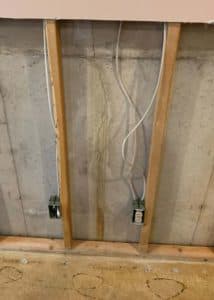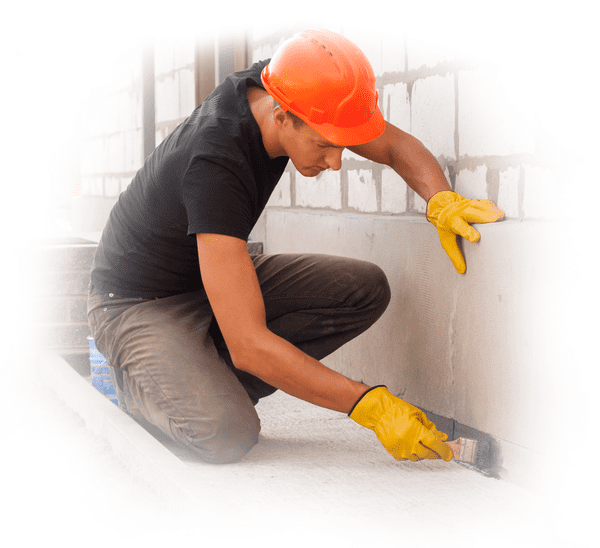No homeowner wants to take down drywall or pull up flooring to get an estimate on repairs. It’s messy, time consuming and can be expensive if you hire someone to do it for you. You know this, I know this, every contractor and repair company out there knows it. That doesn’t change the fact that it sometimes needs to be done.
Acculevel is a family-owned and operated repair company that specializes in waterproofing and foundation repair. We have helped tens of thousands of homeowners restore stability and health to their homes, and we pride ourselves on treating each customer’s house like it’s our own.
We understand the cost and inconvenience of removing drywall and pulling up flooring. And we acknowledge that making this request at the onset of a working relationship is less than ideal. But we require it when it’s necessary for a thorough and accurate diagnosis.
In this article, we’ll explain why we need finishes like drywall and floor coverings removed, and what we’re looking for when the bare floor/walls are exposed.
When Should I Take Down Drywall?
Finished Basements
If water is intruding into your finished basement, you may need to take down drywall in that area. A contractor will need to see where the water is coming from, to determine the best repair method. Some thin cracks only need repair from the inside, while others should be sealed on the inside and the outside of the foundation.
Similarly, if you have signs of foundation settling or hydrostatic pressure damage, a good view of the foundation is necessary. Again, we know removing drywall is tedious, but necessary. In both of these situations, the repairs require access to the bare foundation wall. You can’t seal a crack or stabilize a bowing wall through drywall!
 This photo was taken by an Acculevel project manager during a routine estimate. The cracks in the wall leaked water, so the homeowner removed wet drywall and pulled up carpeting.
This photo was taken by an Acculevel project manager during a routine estimate. The cracks in the wall leaked water, so the homeowner removed wet drywall and pulled up carpeting.
When Should I Pull Up Flooring?
Crawl Space Access
If you have a crawl space, and we’ve asked you to pull up flooring in your home, it’s about access. Our project managers are adults (of course!), and most are male. This means they need at least 18 inches of clear space to get into and move around in the crawl space. Without full access, a complete assessment of your foundation isn’t possible. And without that full access, a work crew won’t be able to make repairs.
Slab Foundation
If you don’t have a basement or a crawl space under your home, you’re likely to have a slab foundation. These can settle like any other foundation, and this is when the problems can start. When one side sinks more than the other, the slab will crack from the strain. Once it’s cracked, the two slab(s) will separate, or drop further and pull apart.
The carpet or flooring needs to be removed, so that the crack is fully visible. When a slab foundation is poured, sometimes it’s patched or covered with a leveler (to smooth the surface). If the contractor can’t view the entire affected area, their estimate may be incomplete or misleading because they’re missing necessary information.
In most cases, the repair for a cracked and sinking slab is slabjacking. Our crew drills small holes into the concrete and injects the filler under the slab to lift and secure it in place. Obviously, this type of repair can’t be done with your flooring in place, either.
Finished Basements
If water is intruding into your finished basement, you may need to pull up the carpet or flooring. You’ll notice this sentence is very similar to the one above, in the “remove drywall” section. This is because a repair can’t be recommended until the source of the water has been located.
The water may be coming in through a crack in the floor or a wall, or through the cove joint, which is the place where the floor and wall connect. The repair methods for repairing these different sources are very different. Wall and floor cracks can often be repaired and sealed; cove joints usually require water drainage to be installed.
What’s the Next Step?
If you need to have someone remove the drywall and/or flooring in your basement, a local handyman or general contractor is a good choice for this. We have a three-step guide that helps you find a quality contractor.
If you have questions about waterproofing your basement, we recommend our homeowner’s complete guide to waterproofing. This guide provides everything from a review of what causes a basement leak to how much waterproofing costs.
Likewise, if you have questions about foundation repairs, we have a thorough review of foundation repairs. Both of these documents are meant to serve as resources for homeowners; feel free to bookmark them, read them from start to finish, or select the chapter that is most relevant for you.
If You’re Looking for A Qualified and Experienced Contractor
Do you live in Acculevel’s service area? Located in central Indiana, we serve Indiana and the surrounding areas. If you contact us, we’ll schedule an appointment for you with one of our knowledgeable project managers, who will recommend the best course of action for you to keep your home healthy and solid for many years to come.
Has it been a while since you’ve hired a contractor? We always urge people to verify the company is reputable, insured, and accredited by the Better Business Bureau. And we suggest that you check out our guide to questions you should ask a contractor. It includes all of the questions we think homeowners should ask, Acculevel’s answers to those questions, and a downloadable version that you can use during your appointment with a contractor.



















